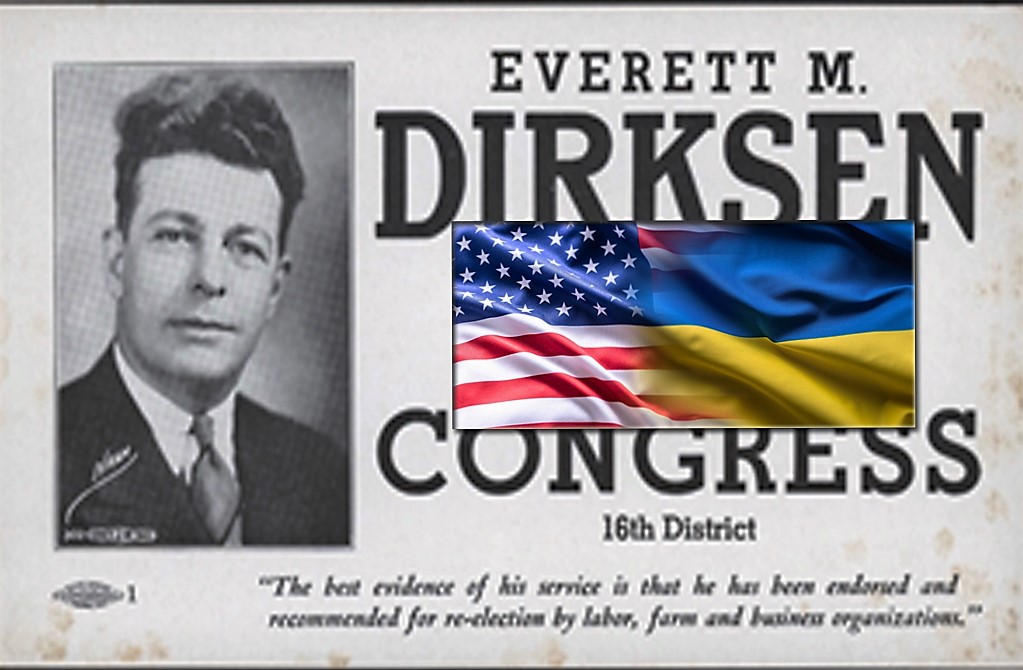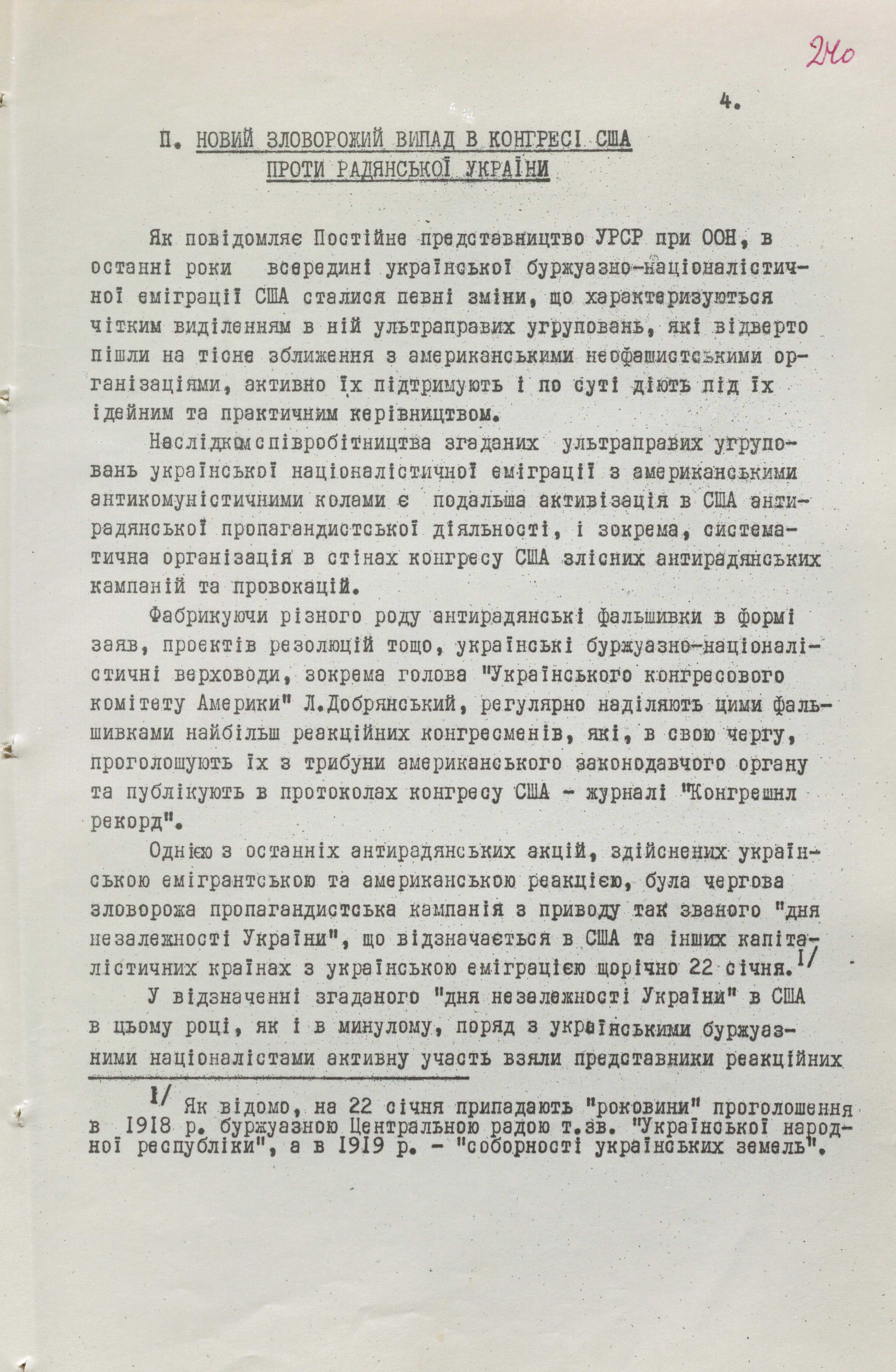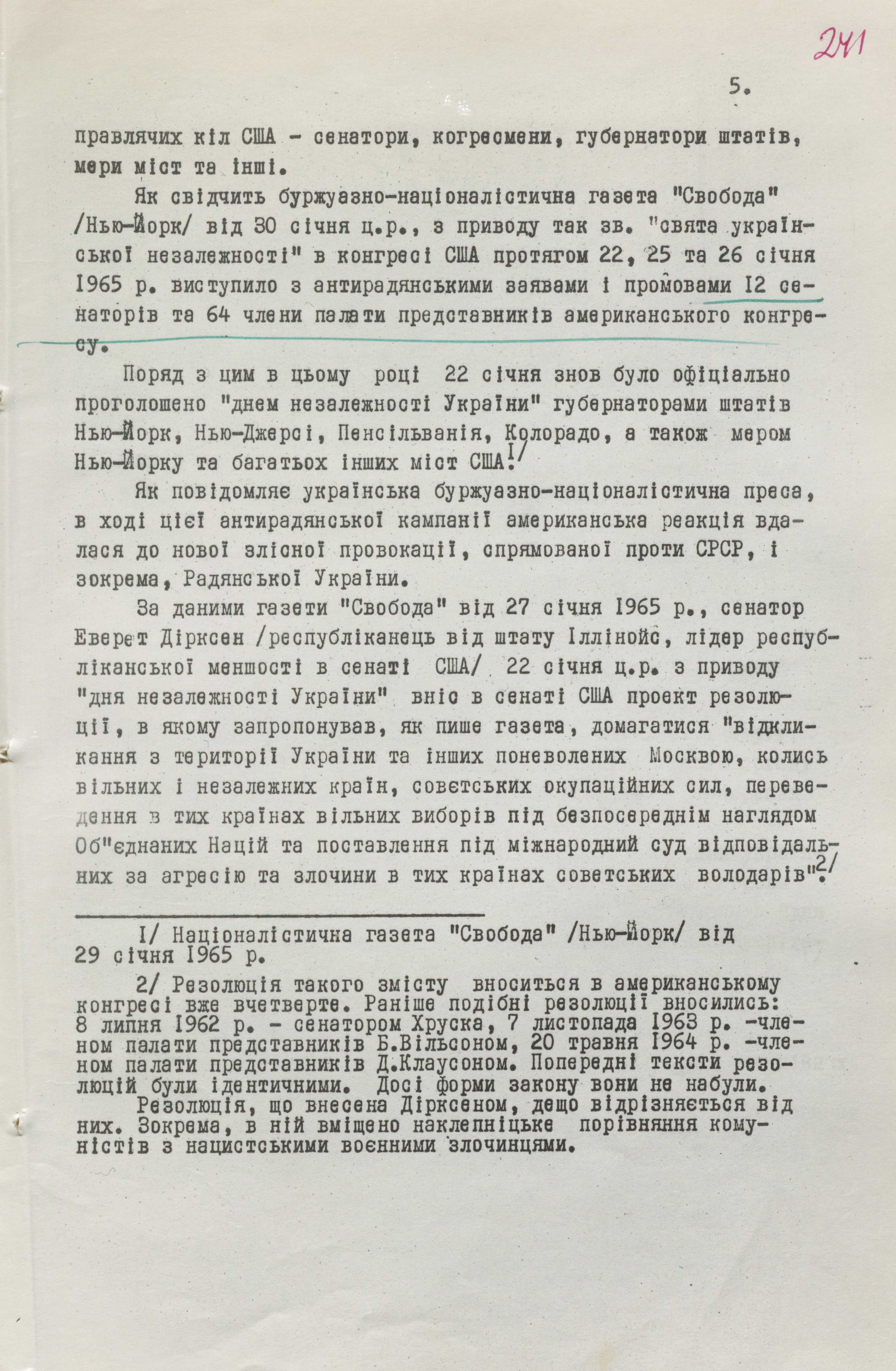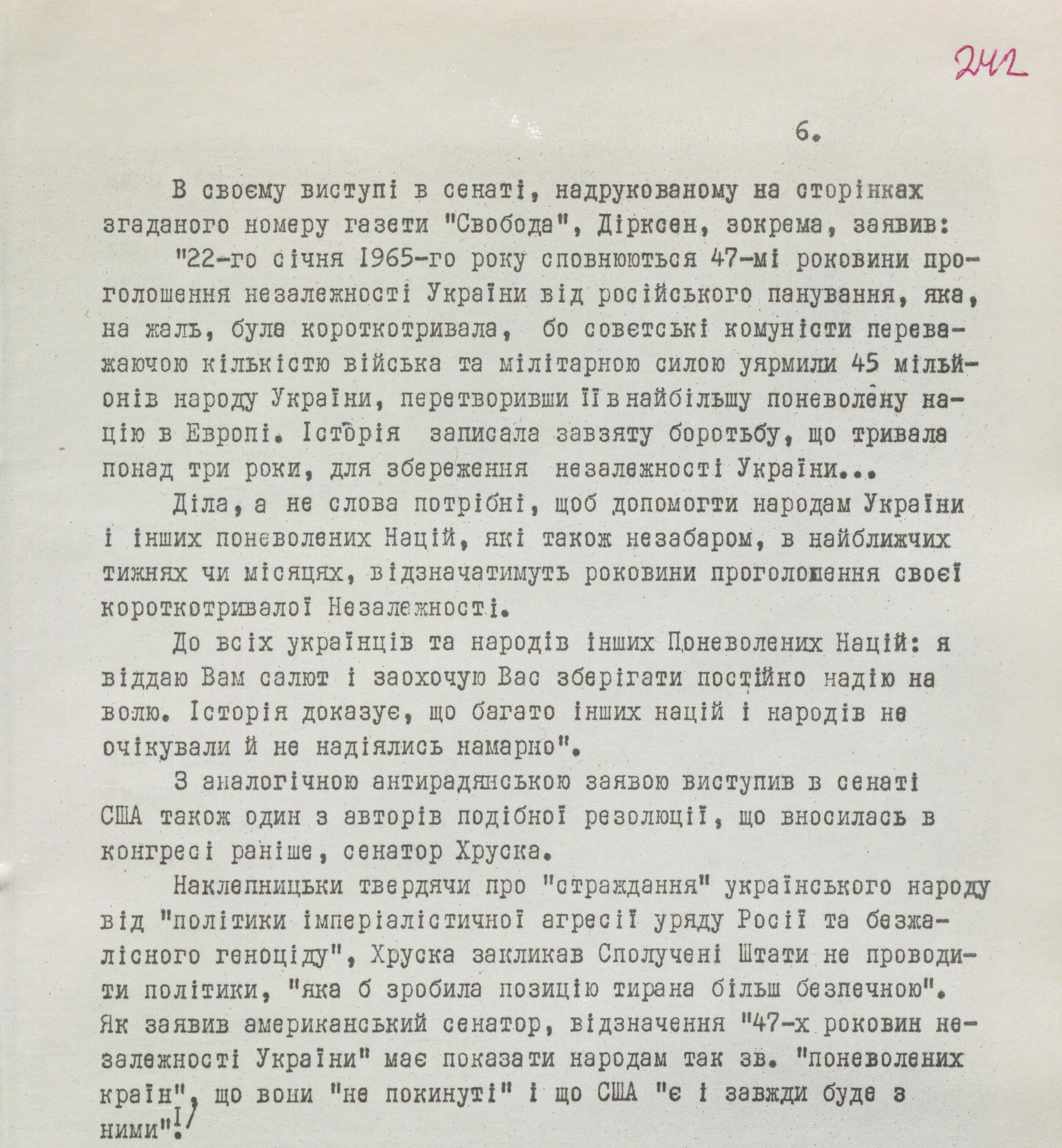Ukraine Independence Day, American Style
8/23/2022

Among the archival documents of the Intelligence, materials were found about how the US Congress marked the Independence Day of Ukraine in the 1960s and accepted appeals in support of the Ukrainians’ struggle for the restoration of independence. In particular, how Senator Everett Dirksen introduced a draft resolution in which moscow's occupation forces on the territory of Ukraine were compared to Nazi war criminals.
For many decades, until 1991, Ukrainians celebrated Independence Day on January 22 – the day of Independence of the Ukrainian People's Republic declared by the 4th Universal and in 1919 – of the Unification of Ukraine. The day was also sometimes called the Day of the Ukrainian Statehood. But it was freely and openly celebrated only by Ukrainian emigrants in the USA, Canada, Germany, Great Britain, France, Australia and other countries. On this day, they organized various festive events and tried to use the opportunity to draw the world community’s attention to the Ukrainian issue, the national liberation struggle of Ukrainians for the restoration of independence.
The ussr was doing its best for Ukrainians to forget this defining milestone of Ukrainian statehood. So, on Ukrainian territory, this date was mostly mentioned underground or in a close circle of like-minded people. The soviet authorities harshly persecuted those who dared to celebrate Independence Day in any way. At the same time, all kinds of information about celebrations abroad were hushed up or distorted, and the organizers of those events were subject to investigation by the kgb on instructions from the kremlin.
The Branch State Archive of the Foreign Intelligence Service of Ukraine has a document entitled “Ukraine on the International Arena”, which allows, on the one hand, to trace the mechanisms of the struggle of the soviet communist and chekist bodies against such manifestations of the so-called “Ukrainian bourgeois nationalism”, and on the other hand, most importantly, – to learn more about the celebration of the Independence Day of Ukraine in an American way.
The document was prepared in 1965 by the press department of the central committee of the communist party of Ukraine on the basis of materials from foreign mass media, mostly Ukrainian publications, and messages from the soviet embassy in Washington and sent to the kgb under the council of ministers of the Ukrainian ssr for an appropriate response.
Especially interesting is the section entitled “A New Malicious Attack in the US Congress Against Soviet Ukraine”. It says that representatives of the Ukrainian emigration in the United States are conducting various “hostile propaganda campaigns”, enlisting the support of “the most reactionary congressmen”. In particular, attention is focused on events celebrating the Independence Day of Ukraine.
The document states that this event is already traditional in the USA, and it is timed to January 22, the day of the declaration of Ukraine's independence by the Ukrainian Central Rada in 1918. “This year,” the document reads, “January 22 was again officially declared the “Independence Day of Ukraine” by the governors of the states of New York, New Jersey, Pennsylvania, Colorado, as well as the Mayors of New York and many other US cities”.
Indeed, as other sources testify, on this day in the USA public and political figures organized meetings, various gatherings, at which speeches were made by prominent figures, including those who directly participated in the events of the Ukrainian Revolution of 1917–1921, as well as American senators and city mayors; prayer services were held in Ukrainian churches. The work of the country's highest legislative body also began with the prayer read by Ukrainian priests. The prayers expressed gratitude to the US leadership for supporting the idea of reviving independent Ukraine and the hope that soon the enemy would be defeated and Ukraine would once again become an independent state.
Therefore, in the 1960s, January 22 was sometimes called Ukrainian Day in the US Congress. Senators and congressmen in their reports raised the issue of the Ukrainian people’s struggle for the creation of their independent state and set the Ukrainian people as an example to other peoples who fought against the kremlin power.
The leader of the Republican minority in the US Senate, Everett Dirksen, was particularly active. In a document from the Intelligence’s archive, it is noted that on January 22, 1965, it was he who submitted a draft resolution to the Senate, in which he proposed to “seek the withdrawal of soviet occupation forces from the territory of Ukraine and other once free and independent countries, enslaved by moscow, holding of free elections in those countries under the direct supervision of the United Nations and bringing the soviet masters responsible for aggression in those countries to the international court”.
The document mentions that this is the fourth time that a resolution of this content has been submitted for consideration by the highest US legislative body. Previously, it was done by Senator Khruska (July 8, 1962), member of the House of Representatives B. Wilson (November 7, 1963), and member of the House of Representatives D. Clawson (May 20, 1964). At the same time, Dirksen's resolution, as the document emphasizes, “somewhat differs from the previous ones. In particular, it contains a slanderous comparison of communists with Nazi war criminals”.
The document quotes the words from Dirksen's speech, with reference to the Svoboda newspaper of January 29, 1965. “Deeds, not words, are needed to help the peoples of Ukraine and other enslaved nations’, he stated.
The speech of Senator Khruska is also quoted. He spoke about the suffering of the Ukrainian people from “the russian government's policy of imperialist aggression and merciless genocide and called on the United States not to pursue policies that would make the tyrant's position more secure”.
(Source – BSA of the SZR of Ukraine. – F. 1 – Case 13091. – Vol. 1. – P. 240–242).



